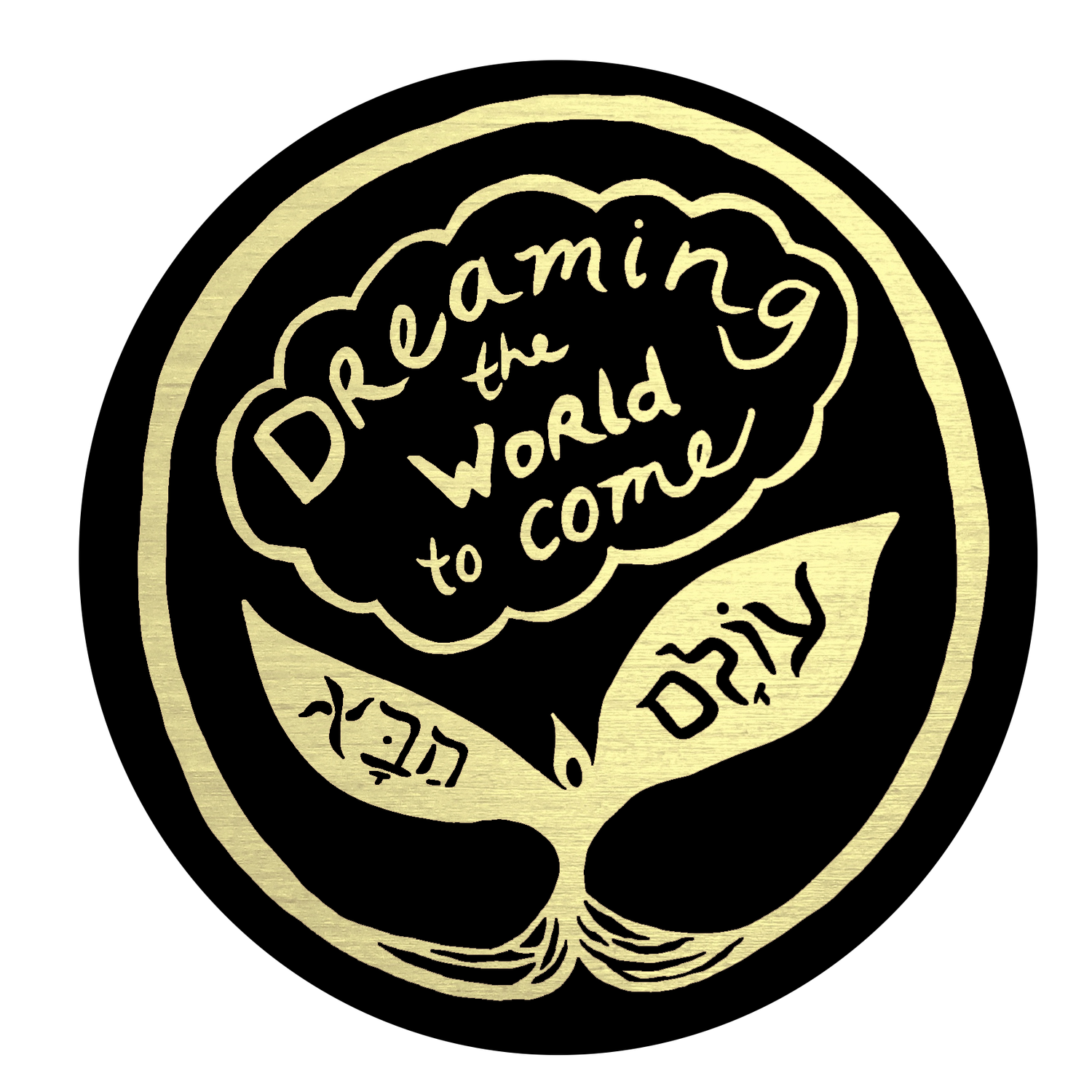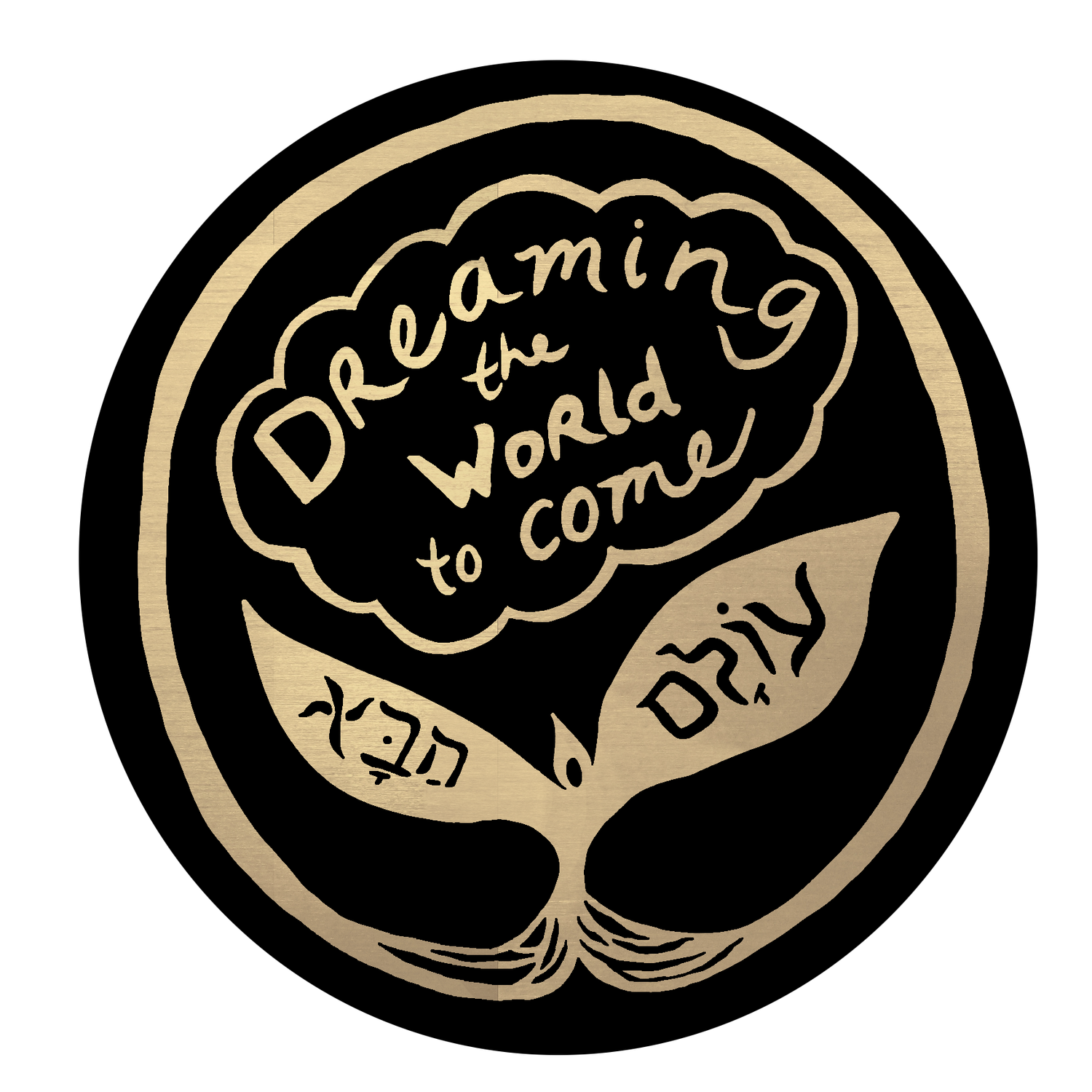Rosh Chodesh
In ancient times, Jews lived in small communities and relied only on the lunar calendar. Likely Shabbat fell on the new moon, the waxing moon, the full moon and the waning moon. Rosh Chodesh, the holiday that begins the Jewish month, falls the day after the dark moon, on the new moon, when you can see the slightest sliver of her smile in the dark sky. Rosh means “head” and chodesh means “to make new” or, “month.” When there was a completely dark night and then a small sliver, the ancients could be sure to begin the new month. There is mythology that on the night of Rosh Chodesh, a fire was lit on a mountain top. When the next community saw it, they too would light a fire. This was how people counted time together.
As agriculture developed, the lunar calendar synced to the solar calendar so people knew when to plant and harvest. The lunar/solar calendar offers seasons for harvesting fruit and grain, celebration of such harvest, grief during change and loss, planting new seeds, dreaming, and going deep. Because of the standardization of the ancient calendar, Rosh Chodesh occasionally falls on the dark moon instead of the first sliver of the moon. You will also notice that sometimes there are two days of Rosh Chodesh, when a month has thirty instead of twenty-nine days. You will see this in the transition from Tishrei to Cheshvan, Shvat to Adar, Nisan to Iyar, Sivan to Tamuz, and Av to Elul.
The darkness of Rosh Chodesh offers a time of rest, like Shabbat. Our bodies naturally want to slow down and rest when things are dark. When the moon is our guide, she gently instructs us in our pace. Slowing down makes space for deep reflection, intention setting, and beginning anew. Many people who bleed monthly or who are tuned into the moon’s cycles find the new moon to be a time of greater psychic ability and insight.
Many people meet monthly in Rosh Chodesh groups or practice a monthly ritual to celebrate the new moon. Each contributor of this planner has offered insight into the month to come and some kind of ritual or practice related to it. These are wonderful suggestions, and we provide the following as further framing for cultivating your practice. Please pick and choose what feels most meaningful to you.
The new moon is a time of renewal and reflection, but also a time of celebration and starting anew. Many gather with a consistent group to form a Rosh Chodesh circle each month, and discover through embodied practice that the ways of old kindle a present connection to our ancient roots. Forming this kind of group creates a bond and valuable support in one’s life. Gather materials such as cedar for burning, candles for blessing, photos of ancestors for remembering (of cultural, identity, or family lineage), and food to share for celebrating. Traditionally, people assigned female at birth would take one or two days off from doing work for Rosh Chodesh. We believe Rosh Chodesh is now for whomever chooses to practice it, whether you are a trans woman, a gender expansive queerdo or a cis man who wants to honor the moon and our ancestors. In these modern times it is nourishing to take an evening to be together.
Start by greeting and checking in with each other. If you are with close friends, this could be a time to share life updates and relish in being together. As you transition to the more formal ritual, you may want to light a fire in the wood stove or fire pit, or light candles and make an altar together. Begin with a song or a wordless melody and as you sing, connect with the light reflected in your friends’ eyes. Praise the light you see, knowing this light you notice in others is also a reflection of your own. Burn some cedar to welcome any benevolent ancestors* who wish to join in your celebration. Talk about the themes and energies of the month to come, to inform your intention setting. This may also be a time to honor a recent loss, celebrate an upcoming life event, or witness a big emotional change. Other components of the ritual can include: burning things that you want to let go of, journaling together to set intentions and sharing them aloud, giving each other personal blessings of support, telling jokes or stories, and anointing each other with water or oil. Close with a song, or sing several. Bless the wine / grape juice and bread / gluten free treat. End with a shared meal to help ground and integrate.
All of these practices can be adapted for solo rituals as well. There are times we aren’t able to meet in groups, or we may feel the need to be alone during this special time.
*Here we specify that the ancestors we welcome are bright or benevolent. Sometimes when we welcome ancestors, everyone wants to come in, and we may not want everyone. Those with unfinished business or who don’t have our best intentions at heart aren’t the best guests/collaborators. Be specific to assist in setting an intentional container.
Blessing for the new moon (from the Kohenet siddur)
Bruchah at shechinah eloteinu ruach ha’olam, mechadeshet et halevanah.
Blessed are you, presence enlivening the world, who renews the moon.
QUESTIONS FOR ROSH CHODESH REFLECTION AND JOURNALING
Take a moment to just be, breathe, and feel:
What are the physical sensations in my body?
Where do I feel stuckness? Numbness? Pleasure? Calm? Pain? Tingling?
Is there a part of my body that has something to say? Can I allow a moment for that part to have a voice?
What childhood associations do I have with this time of year?
What current associations do I have with this time of year?
Are there ways my body is reflecting the mood or qualities of this season?
What do I wish to release from the past month?
Is there a promise or a dream I have let go of that I want to renew to myself this month?
Where have I grown in the past month?
What are my personal dreams, goals, visions for this next month? What are my collective dreams, goals, visions for this next month? How will I honor my ancestors in the month to come?
In this planner you will find a distinction made between the dark moon and new moon, or Rosh Chodesh. The dark moon is what is commonly referred to as the “new moon” on most websites and in astrological literature. Please note that the exact times for dark moons and full moons are listed on the calendar in Pacific Time, because that is where we live. Times that fall between sundown and midnight are difficult to resolve between Hebrew and Gregorian calendars. For tracking purposes, dark and full moons are marked according to where they would fall on the Gregorian calendar. They will be indicated with an asterisk so that you can remember that, according to the Hebrew calendar, this is actually considered to be the next day.
Birkat Halevana Prayer (Blessing the moon, Sephardic)
Kiddush Levanah Prayer (Sanctification of the Moon, Ashkenazi)
This practice is done at night, anywhere from three to fourteen days after the new moon, when the moon is fully visible in the sky (no clouds). Prayers of celebration are sung and there is a practice of jumping (physically or metaphorically) toward the moon three times.


